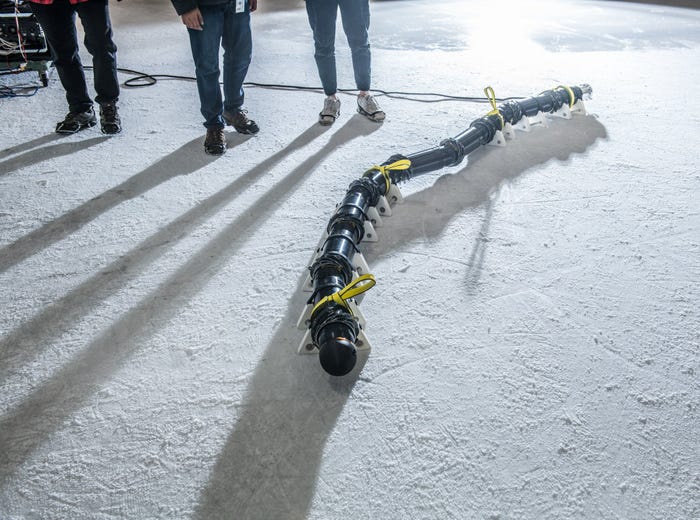NASA’s Robotic Snake to Search for Life on Saturn’s Moon
The robot is designed to navigate and explore Enceladus’ icy surface

A new robotic snake could one day explore Saturn’s moons.
The design, known as an exobiology extant life surveyor (EELS), comes from NASA’s Jet Propulsion Laboratory (JPL).
Designed to be flexible and durable, the robot was created to move across a range of difficult-to-navigate terrains, including sand, rock and ice, and can fit through holes and crevices on a planet’s surface.
Ultimately, the team hopes to send the robot to Saturn’s moon Enceladus to search for signs of life. The project was established after plumes of water vapor were seen rising from the moon during NASA’s Cassini mission, and has led researchers to hypothesize there may be a large body of water beneath the moon’s icy crust which may house living organisms.
To enable the robot’s movement across uneven terrain and small crevices, the team fitted it with rotating screws that allow it to grasp and maneuver through ice structures.

The first EELS prototype awaits testing at the Pasadena Ice Rink. Credit NASA/JPL-CalTech
“The EELS architecture is a snake-like, self-propelled robot and made of multiple, identical, segments,” said JPL in a statement. “EELS uses first-of-a-kind rotating propulsion units that act as tracks, gripping mechanisms, and propeller units underwater, enabling the robot to access a plume vent exit and follow it to its ocean source.
“These crevasse envelopes have driven every aspect of the EELS architecture to make it adaptable to the challenges it may face on this journey from the surface to the ocean.”
Preliminary tests of the design have been undertaken, with the robot deployed at Canada's Athabasca glacier and Mount Meager volcano, testing its navigation and mobility capabilities.
The team said the robot could pave the way for future space exploration projects, being applicable in a range of environments.
“The adaptability of the system opens other destinations such as Martian polar caps, and descending crevasses in ice sheets on Earth,” said JPL.
The team is currently fine-tuning the design and reviewing results from its terrestrial trials.
About the Author
You May Also Like








